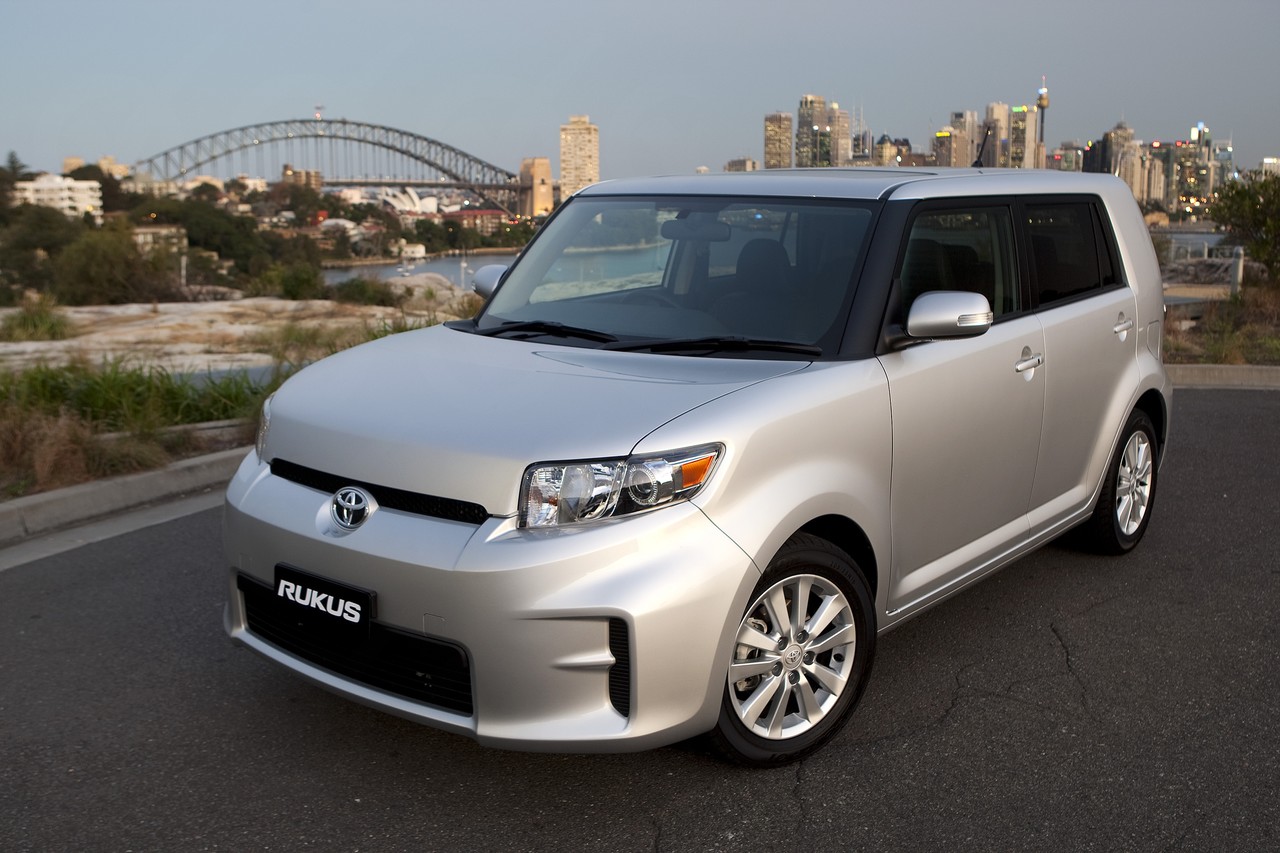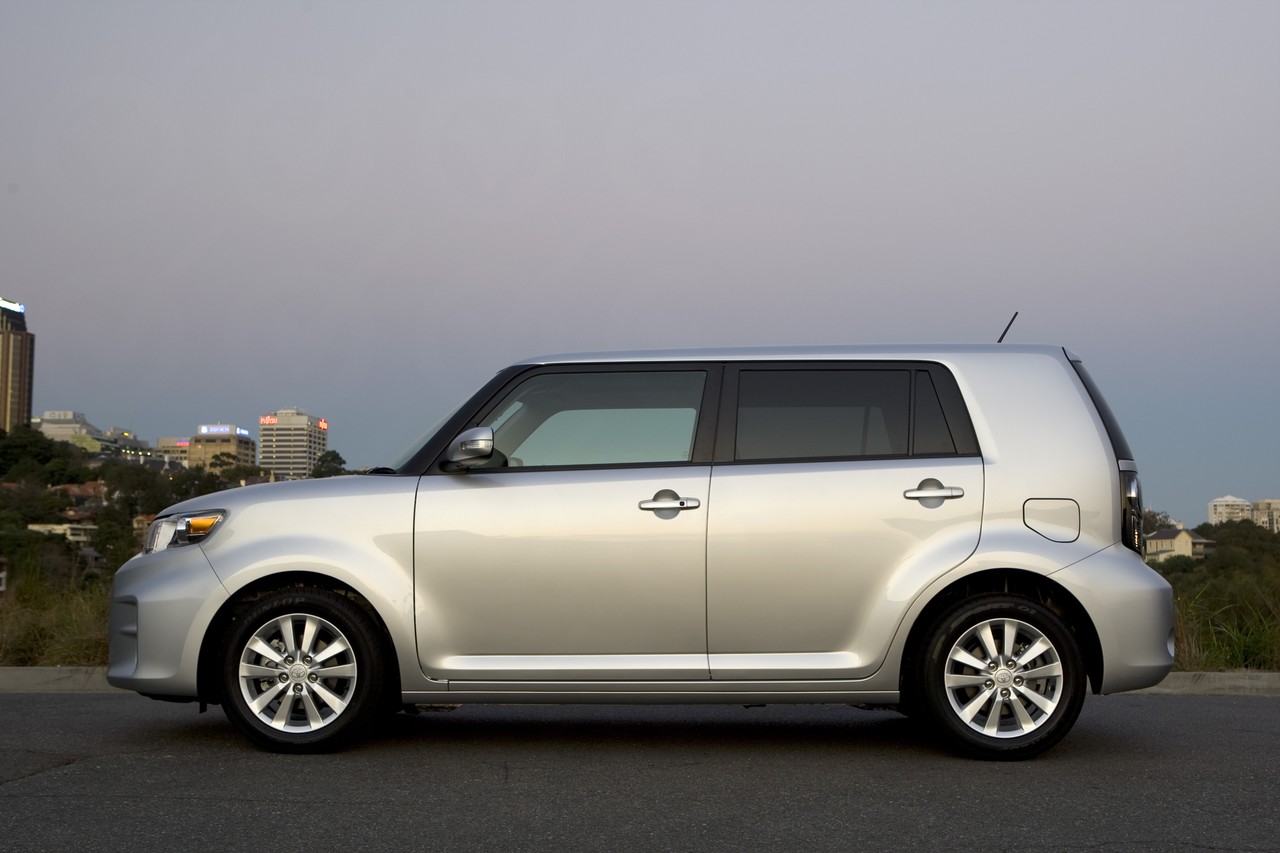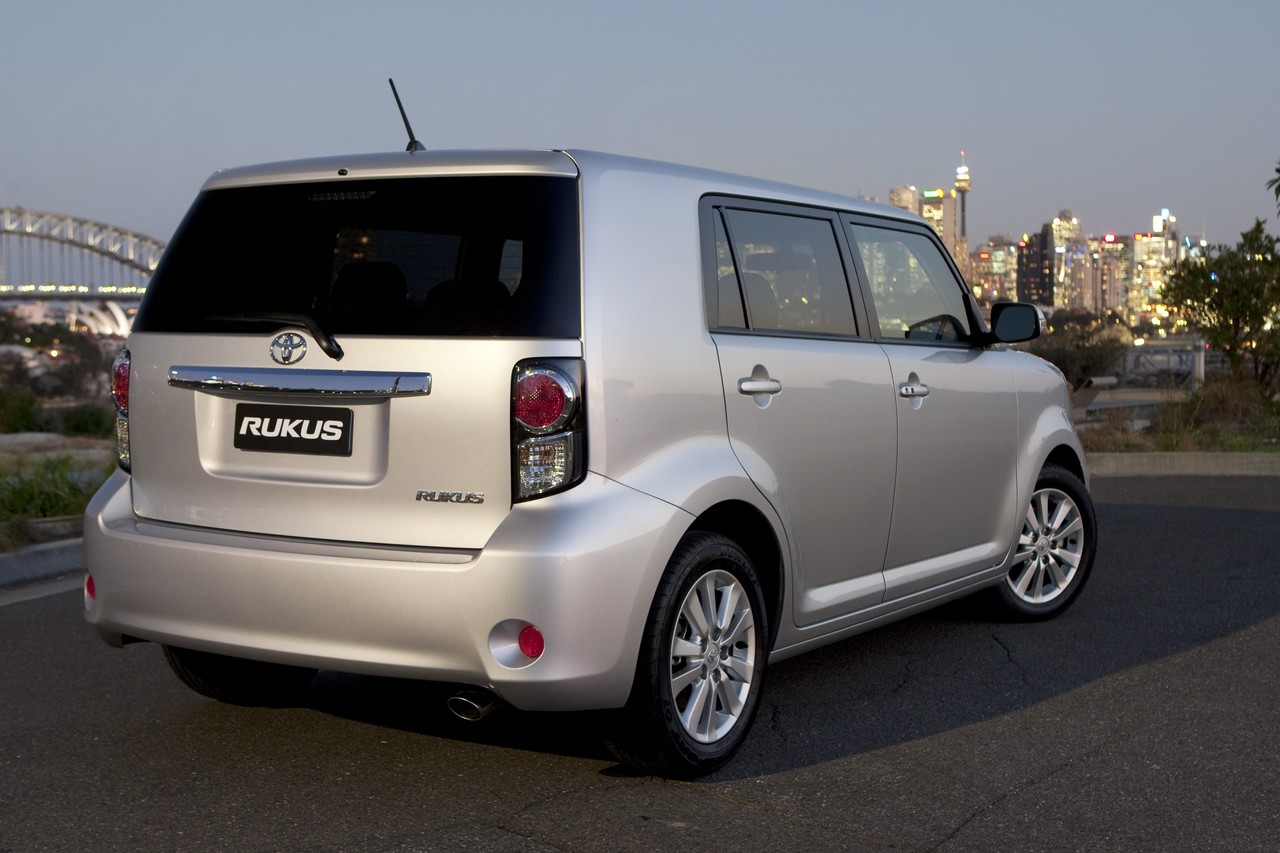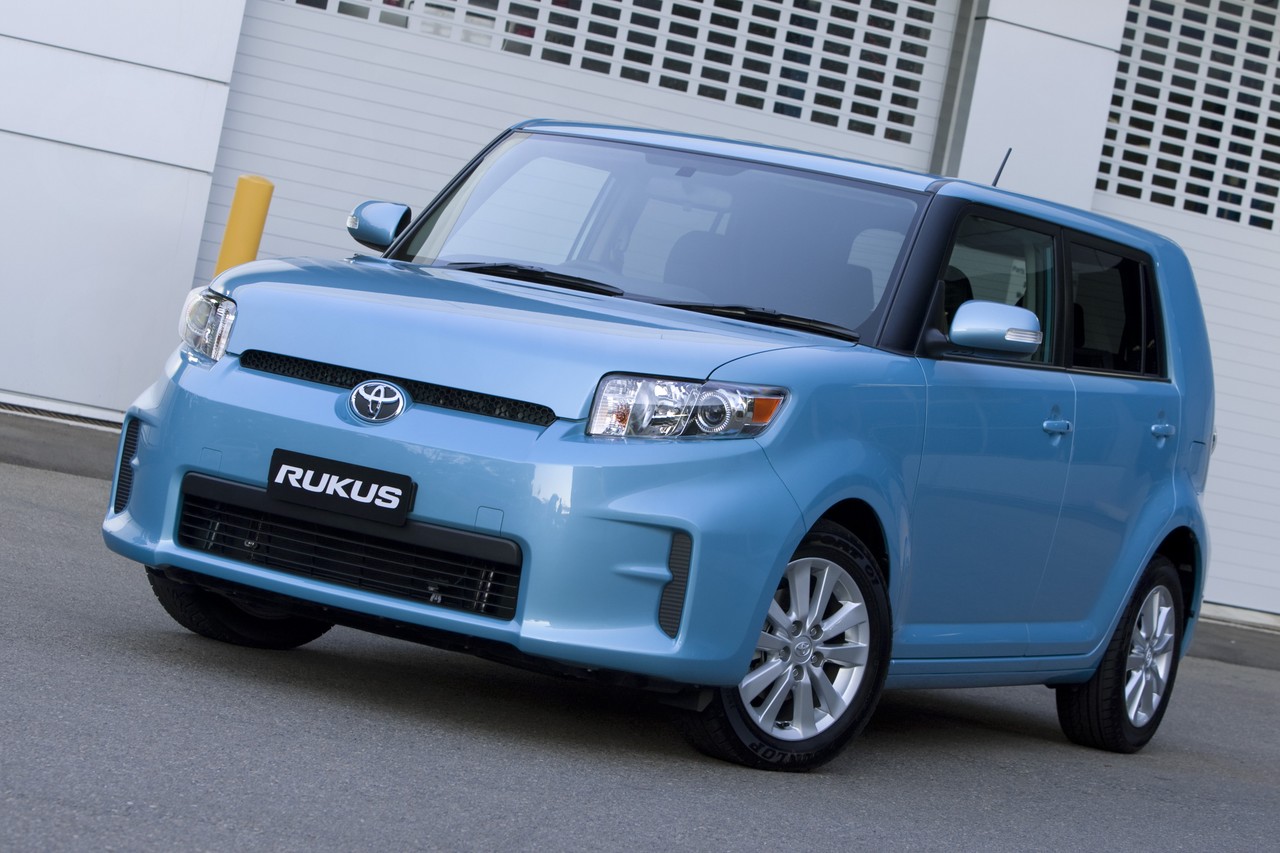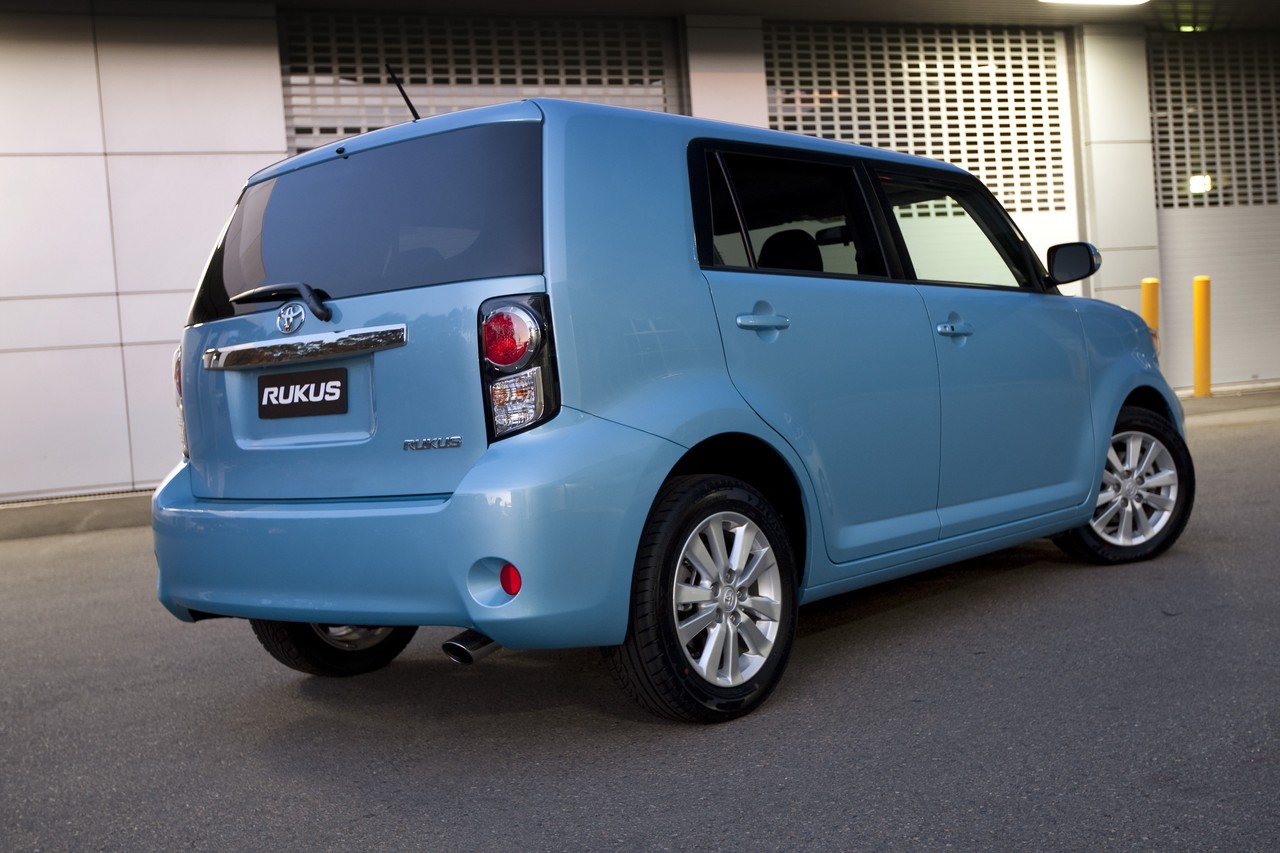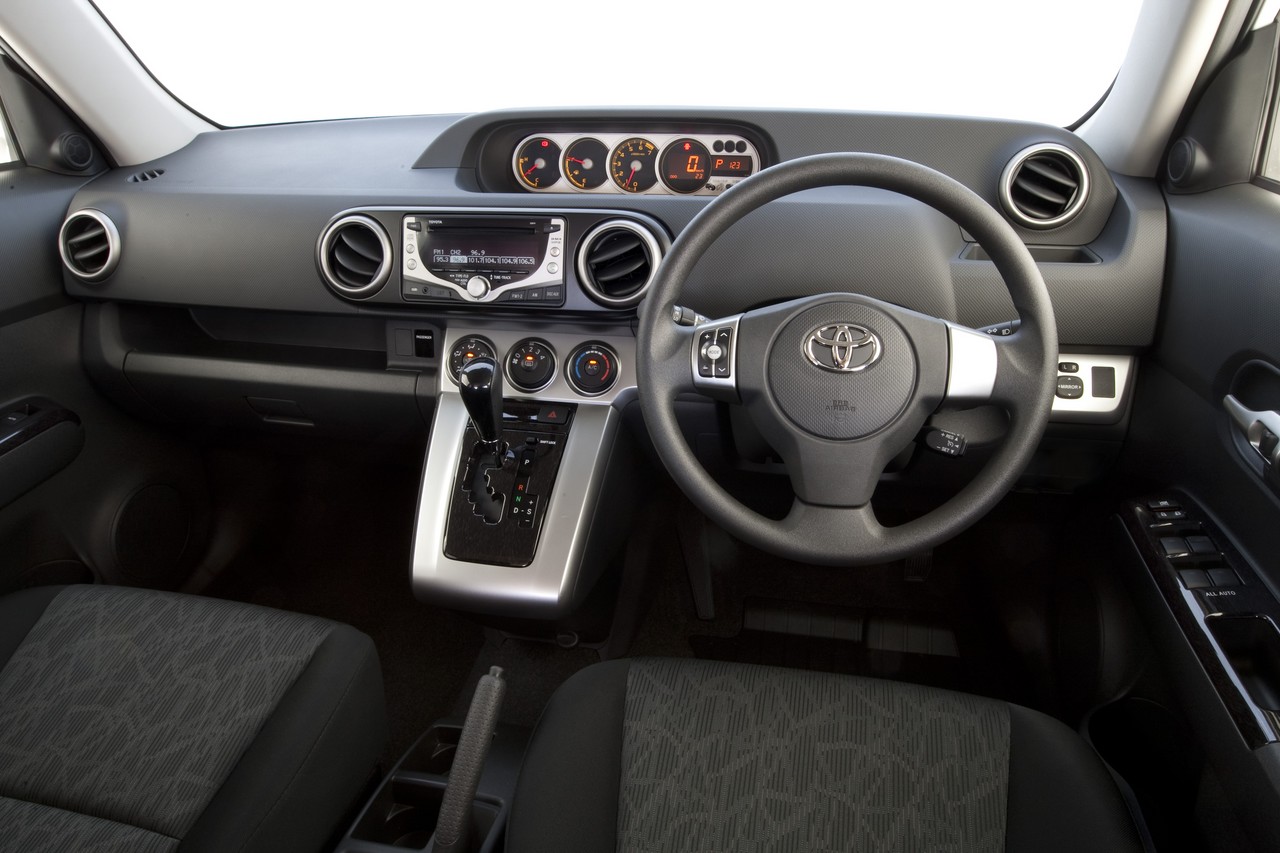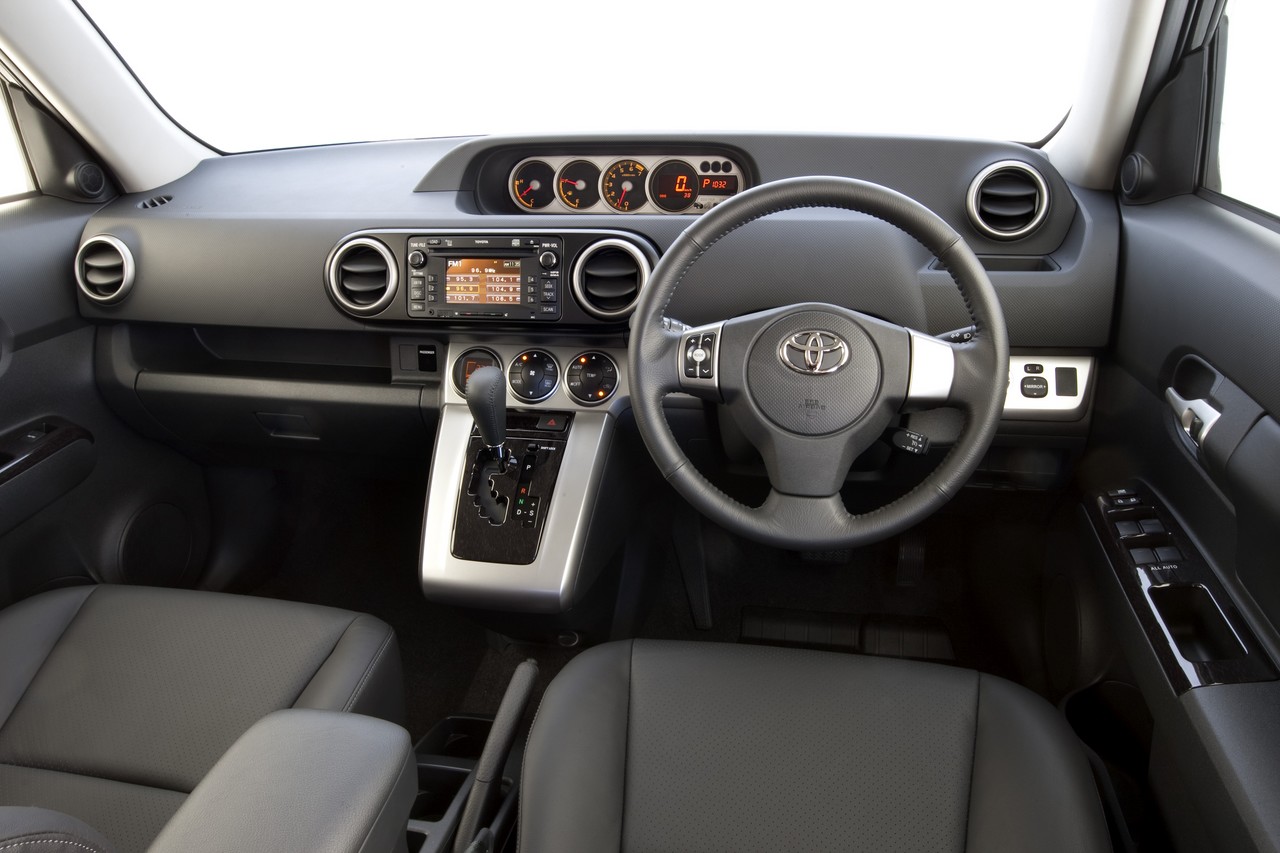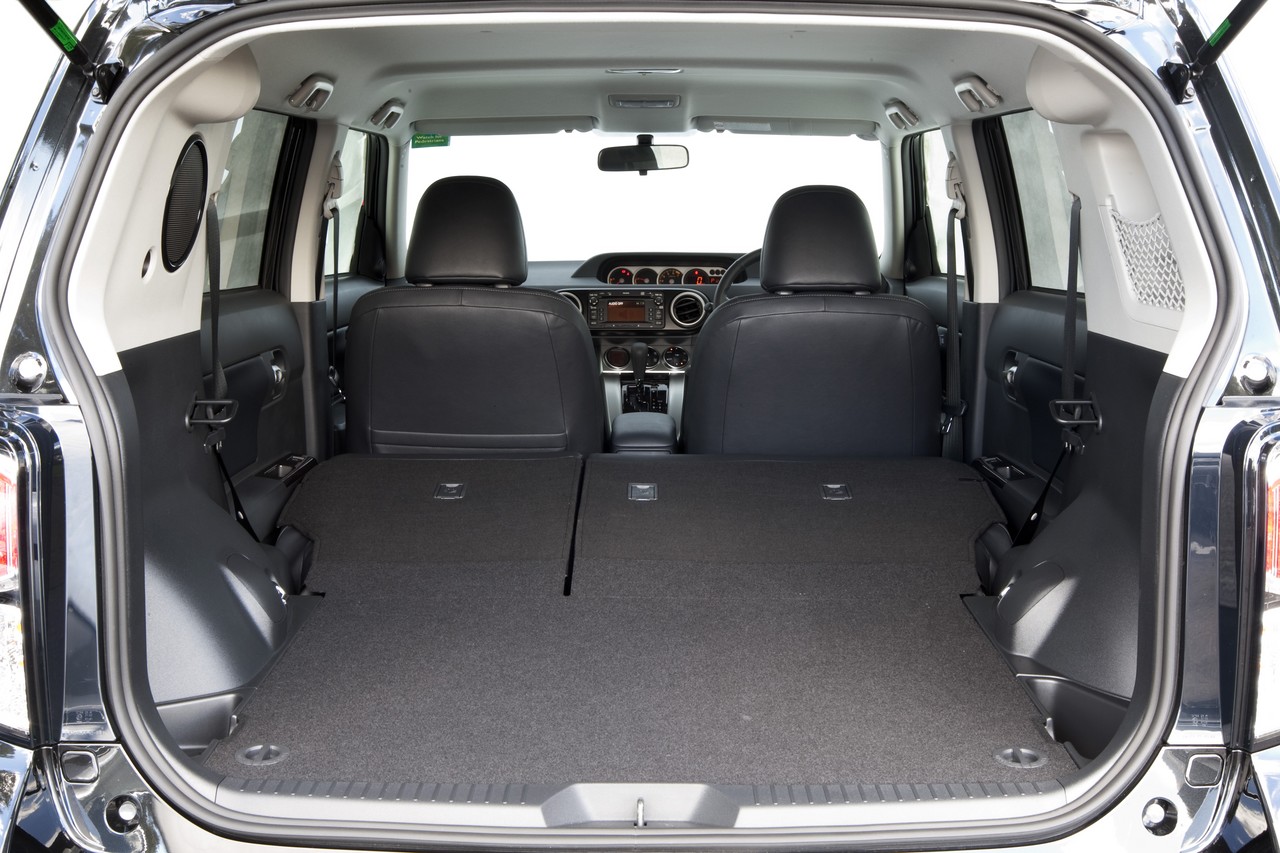
- Flexible 2.4-litre 2AZ-FE petrol engine
- Spacious interior
- Good forward visibility
- Direct steering is well-weighted…
- … but lacks feedback
- Suspension lacks compliance
- Outdated four-speed automatic transmission lacks ratios of rivals
- Poor rear visibility
- 2AZ-FE engine susceptible to excessive oil consumption
Overview
Released in May 2010, the Toyota Rukus was a five-door, front-wheel drive wagon. Manufactured in Japan, the Rukus was powered by a 2.4-litre four-cylinder petrol engine that was mated to a four-speed automatic transmission, the Rukus was initially available in three variants: Build 1, Build 2 and Build 3. In March 2011, a limited-run Halo variant was released.
2AZ-FE engine
The 2.4-litre 2AZ-FE four-cylinder petrol engine had an aluminium block and cylinder head, double overhead camshafts, four valves per cylinder, variable intake valve timing (Toyota’s ‘VVT-i’), twin counter-rotating balance shafts, electronic throttle control and a compression ratio of 9.6:1.
Dimensions
Although based on the E150 Corolla platform, the Rukus was 40 mm longer (at 4260 mm) and 130 mm taller (1645 mm), though width (1760 mm) and wheelbase length (2600 mm) were unchanged.
Suspension and steering
Like the Corolla, the Rukus had MacPherson strut front suspension with L-shaped lower arms and torsion beam rear suspension with two trailing arms. The Rukus was also fitted with electric power-assisted rack-and-pinion steering.
| Variant | Years | Engine | Trans. | Peak power | Peak torque |
|---|---|---|---|---|---|
| Build 1, Build 2, Build 3 |
2010-15 | 2.4-litre petrol I4 (2AZ-FE) | 4sp auto | 123 kW at 6000 rpm | 224 Nm at 4000 rpm |
| Halo | 2011 |
Safety equipment
Standard safety equipment for the Rukus included dual front airbags, front side airbags, full-length curtain airbags (i.e. for front and rear occupants), ABS, electronic brake force distribution, brake assist, electronic stability control, traction control and front seatbelts with pretensioners and load limiters.
Brakes
The Rukus had 275 mm vented front brake discs and 279 mm solid rear discs.
ANCAP crash testing
In ANCAP crash testing , the Rukus received a five star adult occupant protection rating with a score of 32.61. In the offset crash test, protection from serious leg injury was marginal for the driver. In the side impact and pole tests, however, maximum points were awarded.
Features: Rukus
Standard features for the Toyota Rukus Build 1 included 16-inch alloy wheels, a six speaker sound system with CD player and auxiliary inputs, air conditioning, cruise control, Bluetooth connectivity, 60/40 split and flat folding rear seats, remote central locking and proximity key, power windows and mirrors, a tilt and reach adjustable steering wheel, height adjustable driver’s seat, 12 volt power outlet, tinted windows, a trip computer and an immobiliser.
The Rukus Build 2 was further equipped with a nine speaker sound system (including subwoofer) with a six-disc CD player, a 4.3-inch colour display for the audio controls, climate control air conditioning, leather seats, centre console storage compartment and a leather-wrapped steering wheel and gearshift. Beyond this, the Build 3 added a power sunroof.
2011 Rukus Halo
In March 2011, a limited-run Halo variant was released; based on the Build 1, the Halo was distinguished by its tilt and slide sunroof, reversing camera, dark grey seat and door fabrics, blue footwell lighting and ‘Voodoo Blue’ paint.
Brochure
Related links
- Press Kit: Toyota Rukus (May 2010)
- Specifications: Toyota Rukus Halo (March 2011)
- Specifications: Toyota Rukus (November 2011)
- Behind the Wheel: 2011 Toyota Rukus Review
- Toyota Australia: Toyota Rukus
- Wikipedia.org: Scion xB/Toyota Rukus
